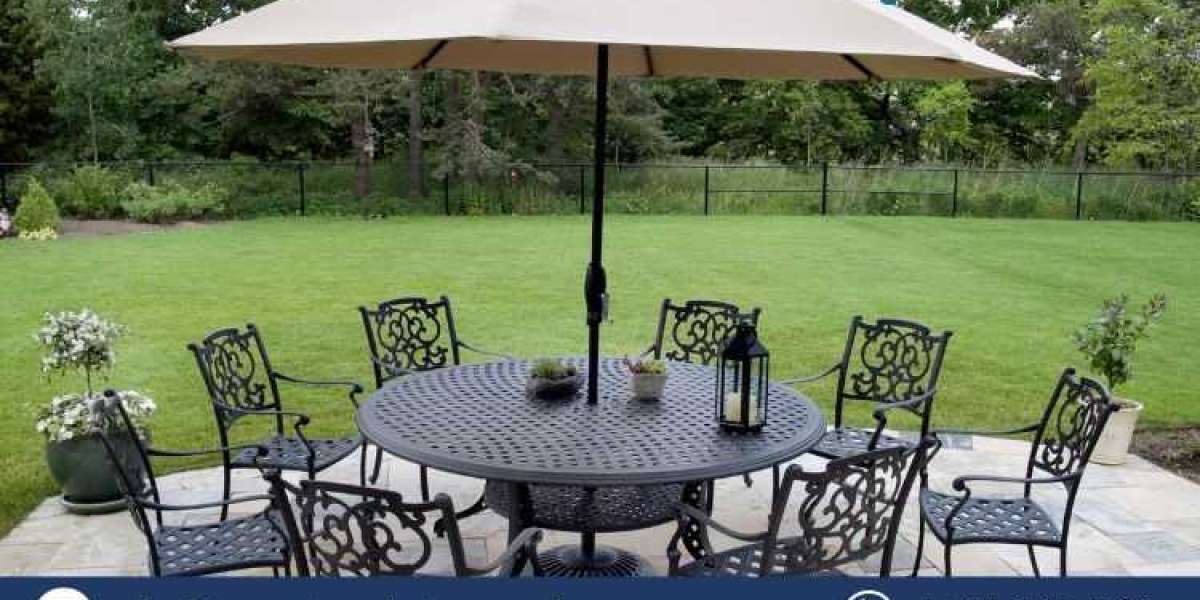The global Metal Furniture market Size has been experiencing steady growth, driven by increasing urbanization, changing lifestyles, and a growing preference for durable and stylish furnishings. In 2023, the market size reached approximately USD 155.35 billion and is projected to grow at a CAGR of 4.6% from 2024 to 2032, reaching an estimated value of USD 232.64 billion by 2032. This article delves into the key benefits, industry developments, driving and restraining factors, market segmentation, trends, and insights regarding the metal furniture market.
Key Benefits of Metal Furniture
Durability: Metal furniture is known for its strength and longevity. Unlike wood, metal is resistant to wear and tear, making it suitable for both indoor and outdoor use.
Versatility: Metal furniture comes in various styles, shapes, and sizes, catering to different aesthetic preferences and functional requirements.
Maintenance: Metal furniture requires minimal maintenance compared to other materials. It can be easily cleaned and is less prone to damage from pests.
Sustainability: Many manufacturers are adopting eco-friendly practices, using recycled materials, and creating furniture that is recyclable, appealing to environmentally conscious consumers.
Cost-effectiveness: Metal furniture often offers better value over time due to its durability, reducing the need for frequent replacements.
Key Industry Developments
The metal furniture market has witnessed several significant developments in recent years:
Innovative Designs: Manufacturers are increasingly focusing on innovative designs that blend functionality with aesthetic appeal. This trend includes ergonomic designs that enhance comfort.
Smart Furniture: The emergence of smart technology has led to the development of metal furniture equipped with technology to improve user experience, such as built-in charging ports and integrated speakers.
Customization: Many companies are now offering customization options, allowing consumers to choose colors, sizes, and designs that fit their specific needs.
E-commerce Growth: The rise of online shopping has transformed the way consumers purchase furniture, prompting manufacturers to establish a strong online presence.
Driving Factors
Several factors are propelling the growth of the metal furniture market:
Urbanization: Rapid urbanization is leading to an increased demand for space-efficient and stylish furniture in urban settings, where metal furniture fits well.
Rising Disposable Income: Growing disposable incomes are enabling consumers to invest in quality furnishings, including metal furniture that offers durability and style.
Shifting Consumer Preferences: There is a growing preference for modern and contemporary furniture styles, with metal pieces often fitting seamlessly into these designs.
Increasing Demand for Outdoor Furniture: The rising popularity of outdoor living spaces has boosted the demand for metal furniture, which is often favored for patios and gardens due to its durability.
Restraining Factors
Despite its growth prospects, the metal furniture market faces certain challenges:
Price Sensitivity: While metal furniture is durable, its initial cost can be higher than alternative materials, which may deter price-sensitive consumers.
Competition from Alternative Materials: The presence of other materials like wood, plastic, and composite materials offers consumers a wide range of options, potentially impacting metal furniture sales.
Health Concerns: Concerns regarding the use of chemicals in metal finishes and coatings can affect consumer preferences, especially among environmentally conscious buyers.
Market Segmentation
The metal furniture market can be segmented based on several criteria:
By Type
- Residential Metal Furniture: Includes items like beds, tables, chairs, and cabinets used in homes.
- Commercial Metal Furniture: Consists of furniture designed for office spaces, restaurants, hotels, and other commercial settings.
By Material
- Steel: Known for its strength and durability, steel furniture is often used in both residential and commercial settings.
- Aluminum: Lightweight and resistant to corrosion, aluminum furniture is popular for outdoor use.
- Iron: Cast iron furniture is favored for its classic look and durability, especially in outdoor settings.
By End-User
- Households: A significant portion of the market, driven by individual consumers.
- Commercial Enterprises: Includes offices, hotels, and restaurants that require functional and stylish furniture.
By Region
- North America: One of the largest markets, characterized by high disposable incomes and a strong demand for stylish furnishings.
- Europe: Known for innovative designs and sustainability trends in furniture.
- Asia-Pacific: The fastest-growing region, driven by urbanization and increasing disposable incomes.
Market Outlook
The future outlook for the metal furniture market appears promising. As consumer preferences shift towards sustainable and durable products, metal furniture manufacturers are likely to adapt by incorporating eco-friendly practices and innovative designs. Additionally, the growth of e-commerce will facilitate easier access to a wide range of metal furniture options for consumers.
Trends Shaping the Industry
Sustainability Initiatives: With increasing awareness of environmental issues, many manufacturers are focusing on sustainable sourcing and production practices.
Minimalism and Functionality: The trend toward minimalism in interior design is driving demand for sleek and functional metal furniture pieces.
Technological Integration: The incorporation of technology into furniture design is a rising trend, with smart features becoming more common.
Regional Analysis/Insights
North America
The North American market is characterized by a strong demand for high-quality metal furniture, particularly in urban areas. The growth of e-commerce and customization options are expected to further drive market growth in this region.
Europe
Europe is known for its design-led approach to furniture, with metal furniture manufacturers focusing on aesthetics and sustainability. The market here is influenced by trends in minimalism and eco-friendliness.
Asia-Pacific
The Asia-Pacific region is poised for significant growth, driven by rapid urbanization, increasing disposable incomes, and a growing middle class. Countries like China and India are expected to lead this growth due to their large populations and expanding urban centers.
Top Impacting Factors
- Consumer Preferences: Shifting consumer preferences towards modern, durable, and stylish furniture.
- Economic Growth: Economic factors influencing consumer spending on furniture.
- Technological Advancements: Innovations in manufacturing processes and materials.
- Sustainability: Increasing demand for environmentally friendly products.
Target Audience
The target audience for metal furniture includes:
- Homeowners: Individuals looking for durable and stylish furniture for their residences.
- Business Owners: Companies requiring functional and appealing furniture for their offices or commercial spaces.
- Designers and Architects: Professionals who incorporate metal furniture into their designs for residential and commercial projects.
Major Key Players
Several prominent companies dominate the metal furniture market, including:
- Inter IKEA Systems B.V.
- Steelcase Inc.
- Kimball International, Inc.
- MillerKnoll, Inc.
- Godrej Boyce Manufacturing Company Limited
- Simpli Home Ltd.
- CHYUAN CHERN Co Ltd.
- Dorel Industries Inc.
- Meco Corporation
- Oliver Metal Furniture
- Others
Opportunities
The metal furniture market presents various opportunities for growth:
- Expanding E-commerce: Leveraging online sales channels to reach a wider audience.
- Customization Trends: Offering tailored solutions to meet specific customer needs.
- Sustainable Practices: Incorporating eco-friendly materials and processes can attract environmentally conscious consumers.
Challenges
The metal furniture market also faces challenges, including:
- Intense Competition: The presence of alternative materials and established players can create competitive pressures.
- Price Sensitivity: Balancing quality and affordability to attract diverse consumer segments.
Scope
The scope of the metal furniture market is broad, encompassing residential, commercial, and outdoor applications. With the increasing trend towards sustainable and stylish furnishings, the market is poised for continued growth, providing ample opportunities for both established players and new entrants.



